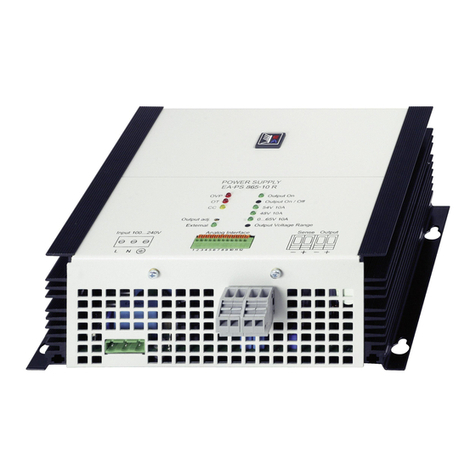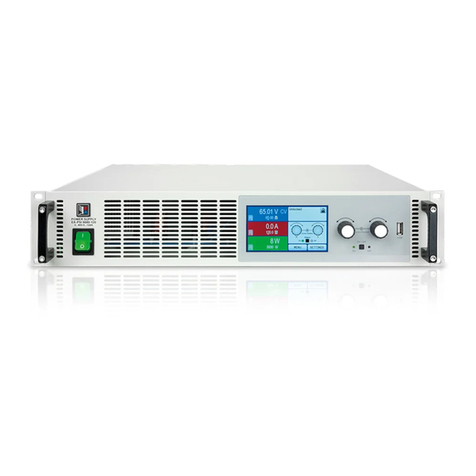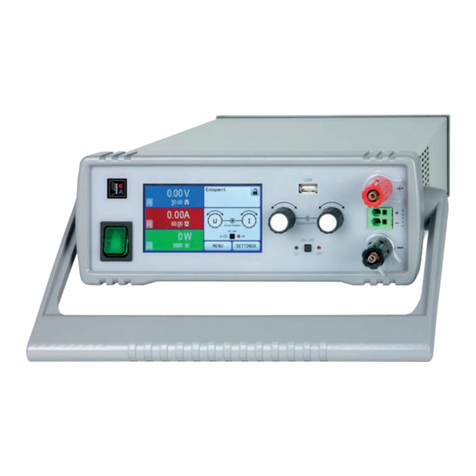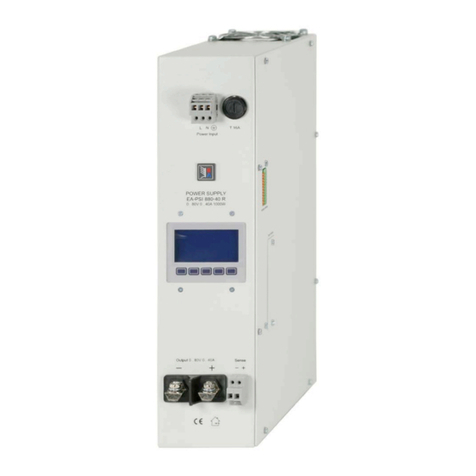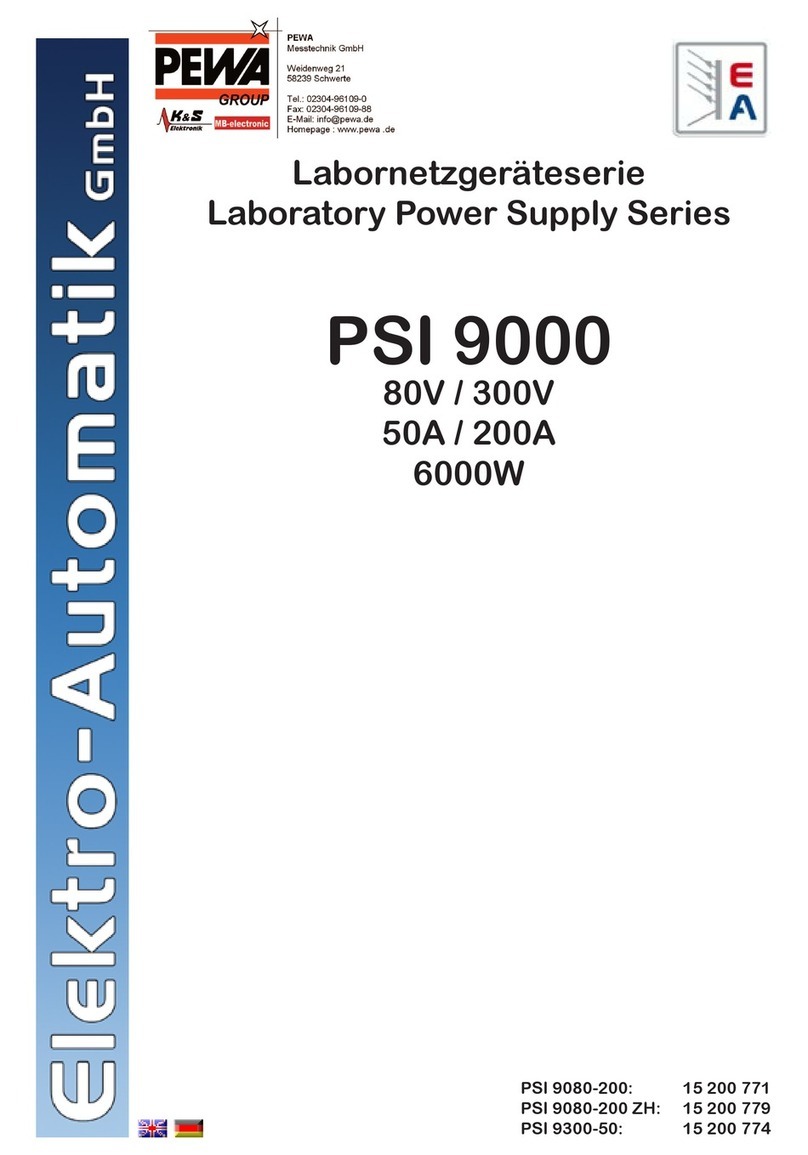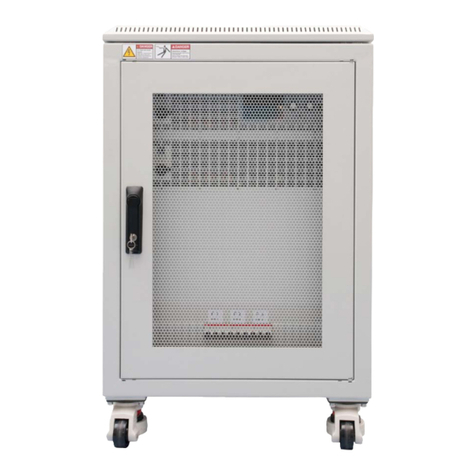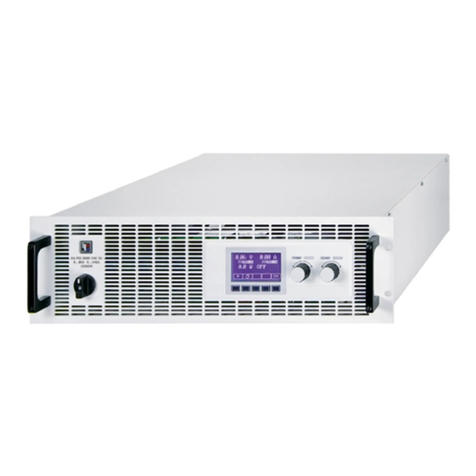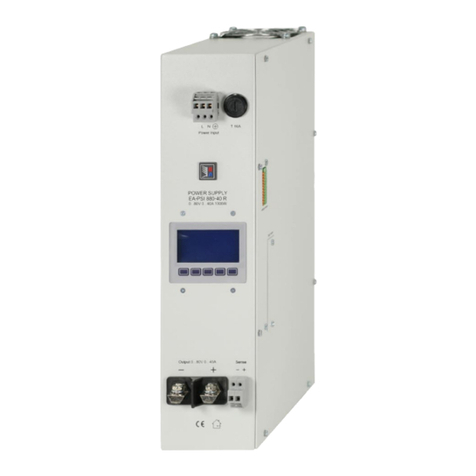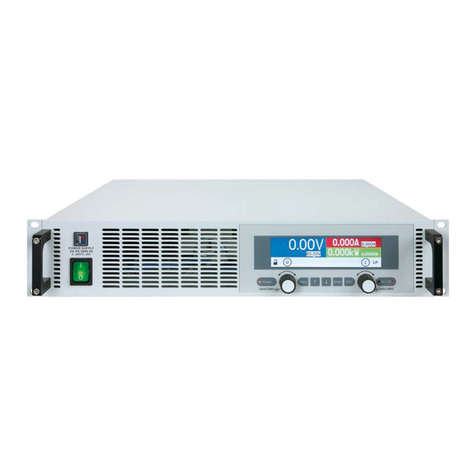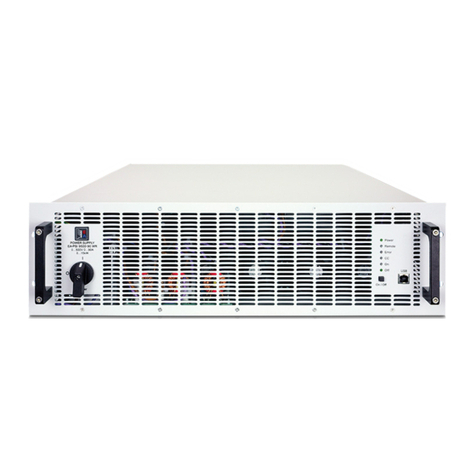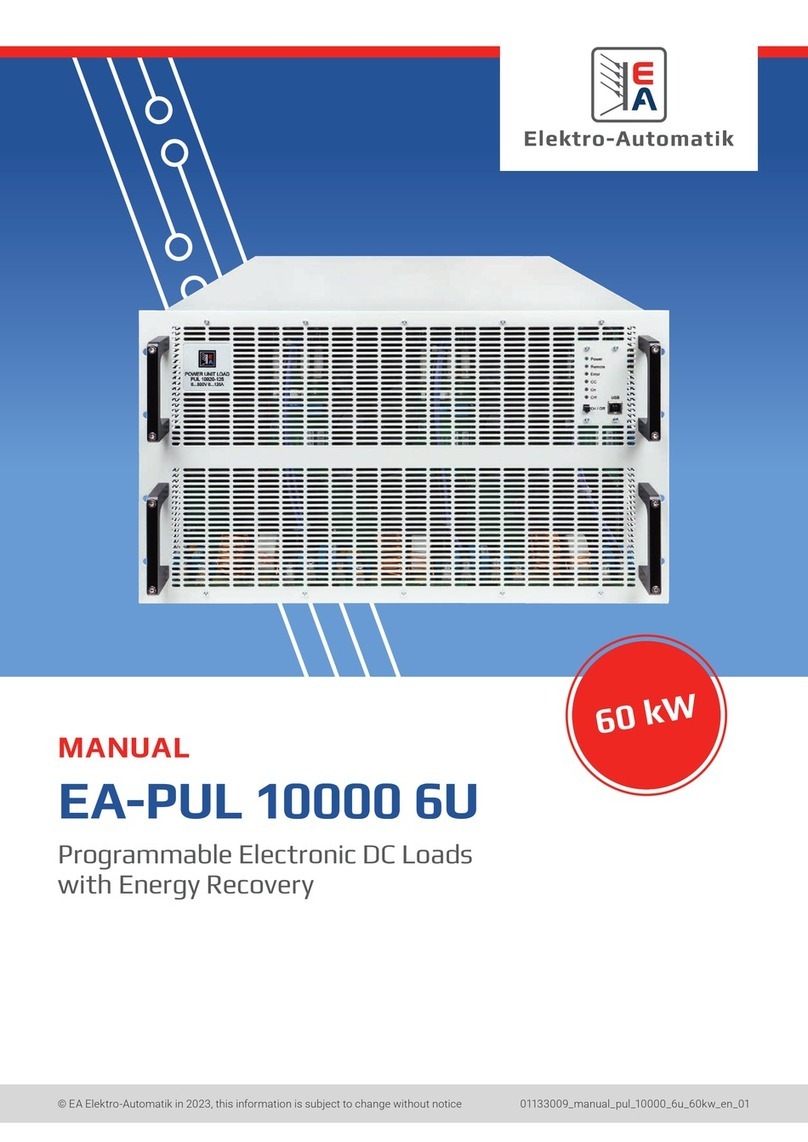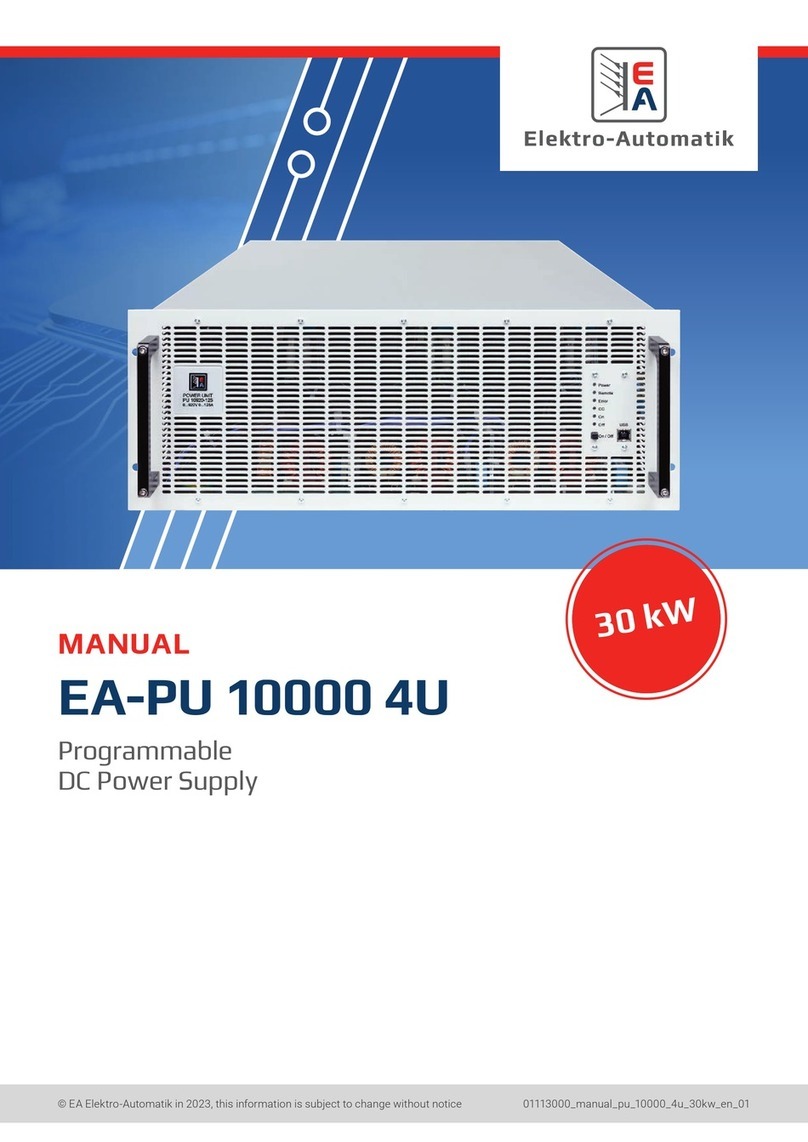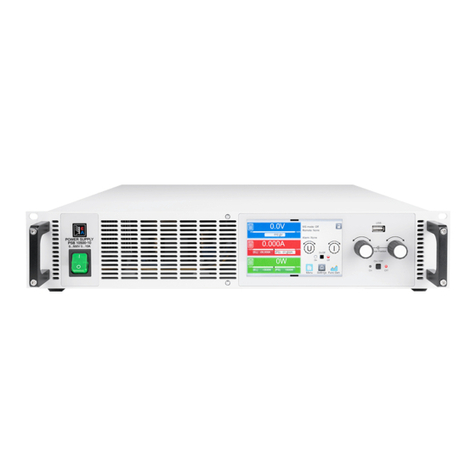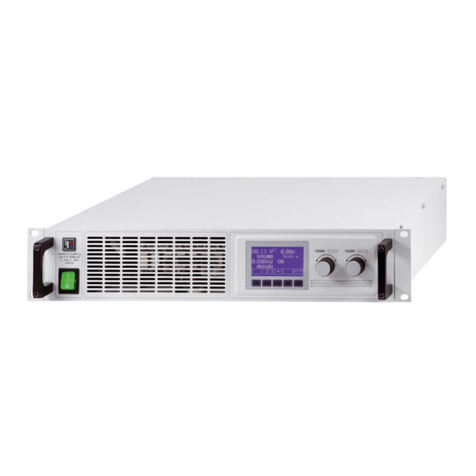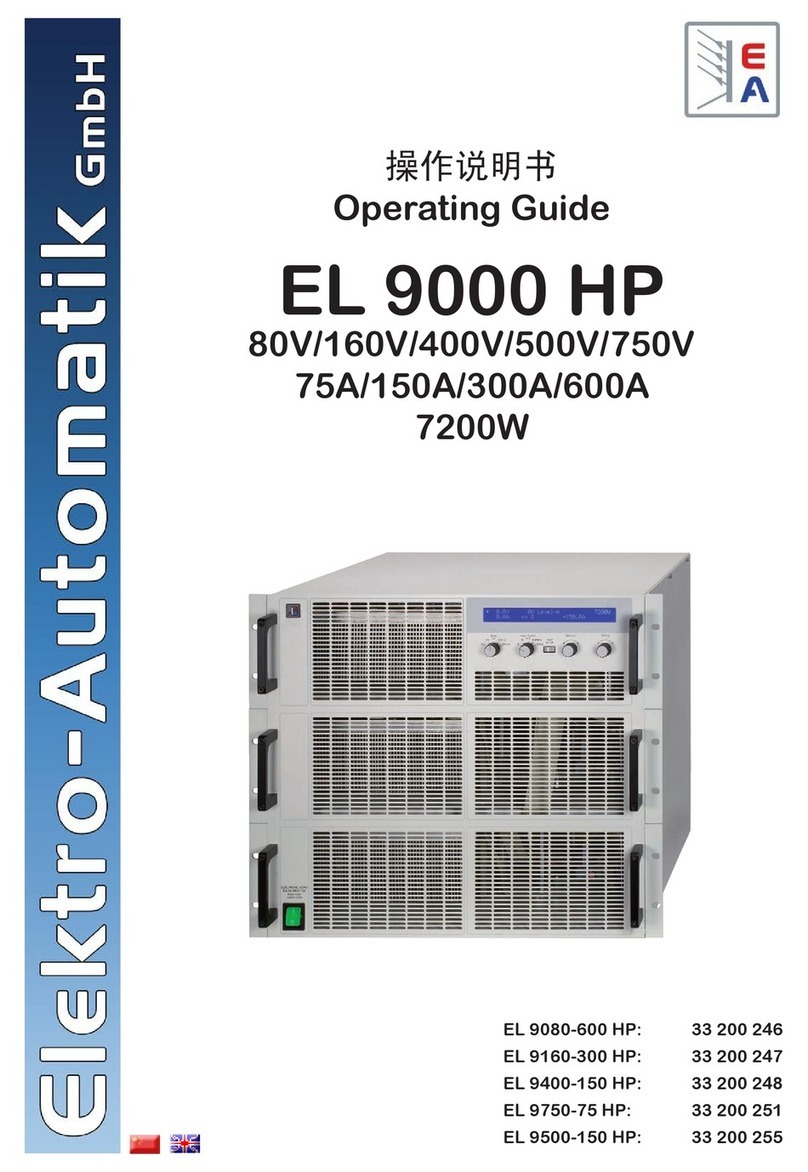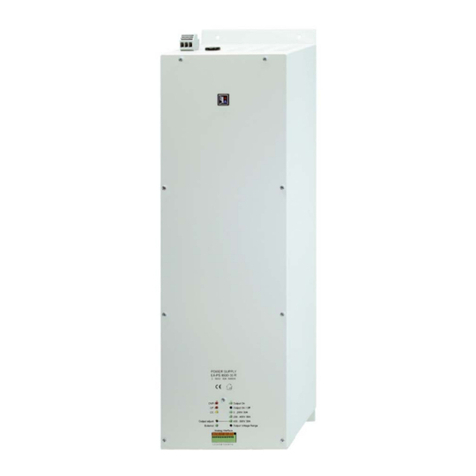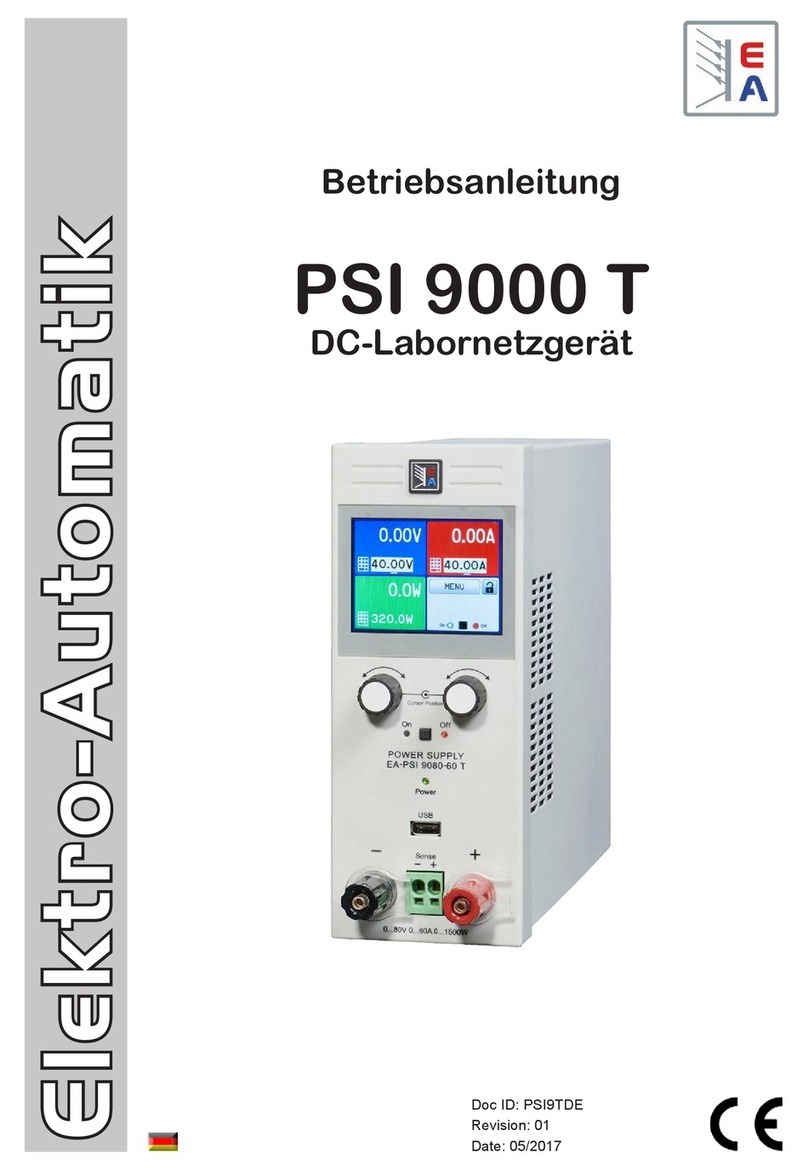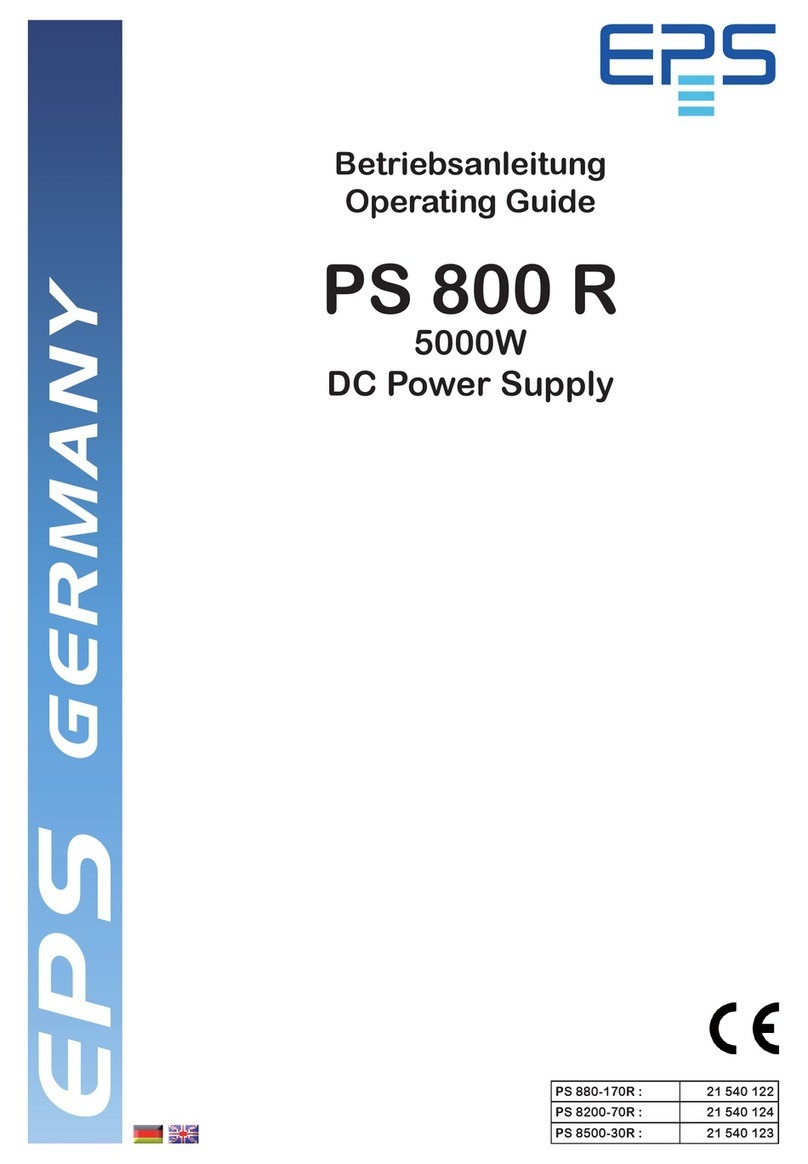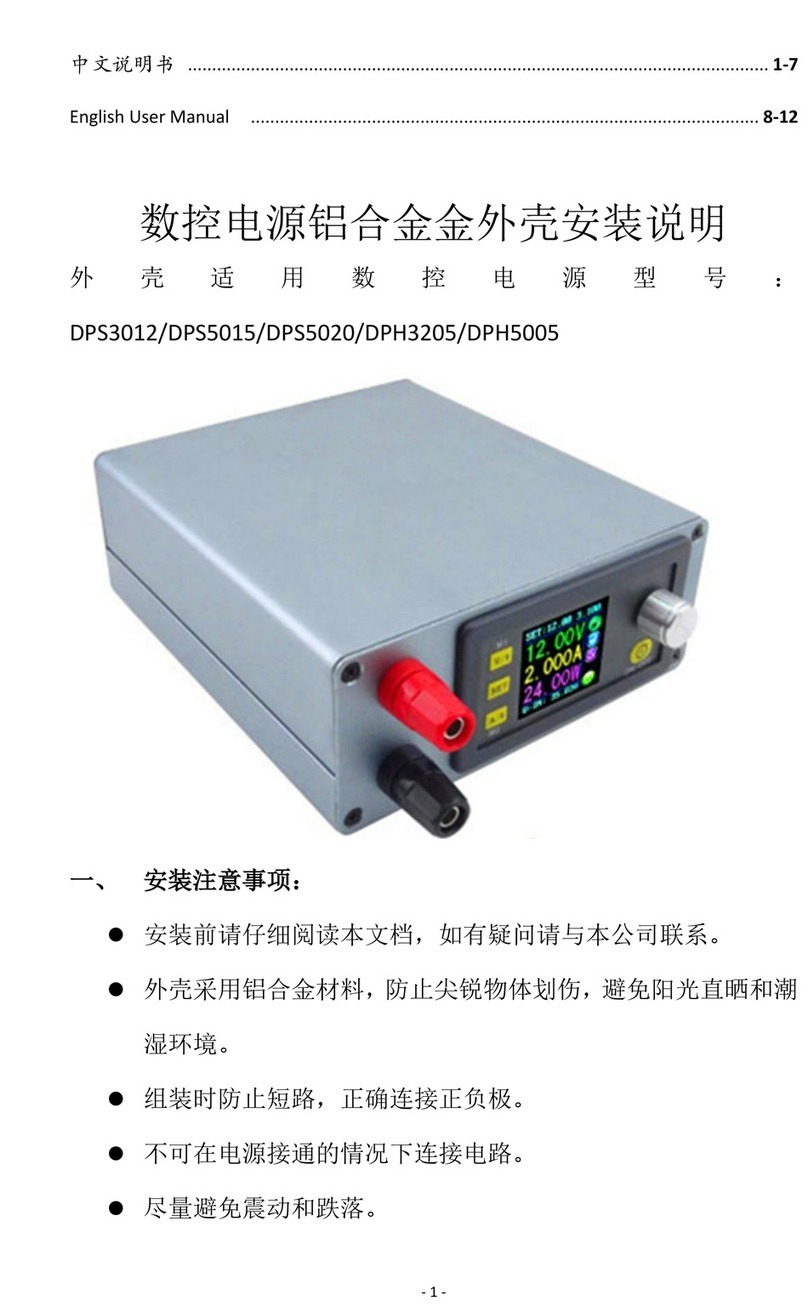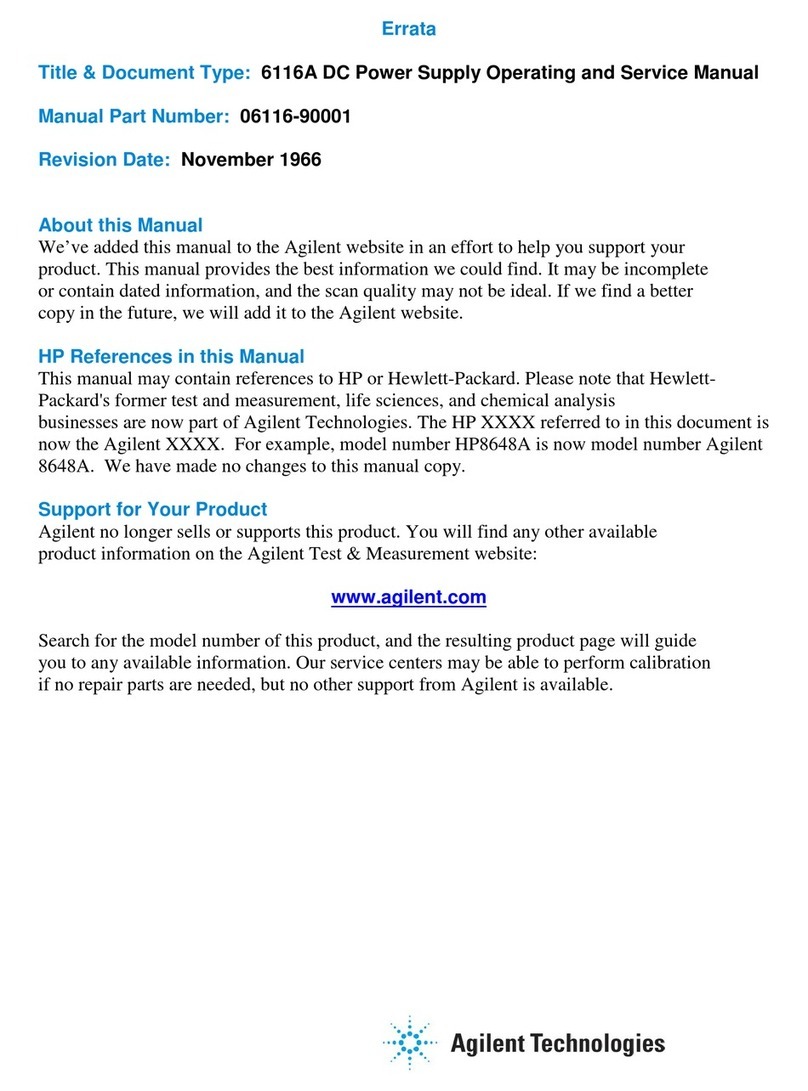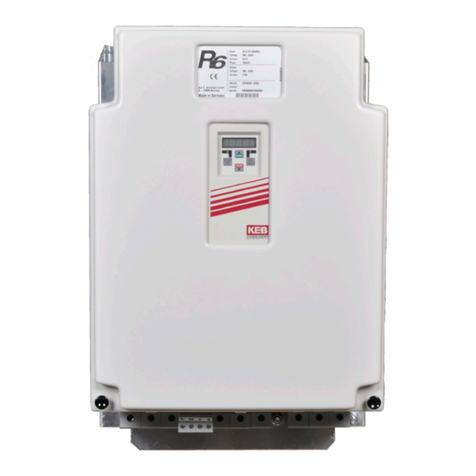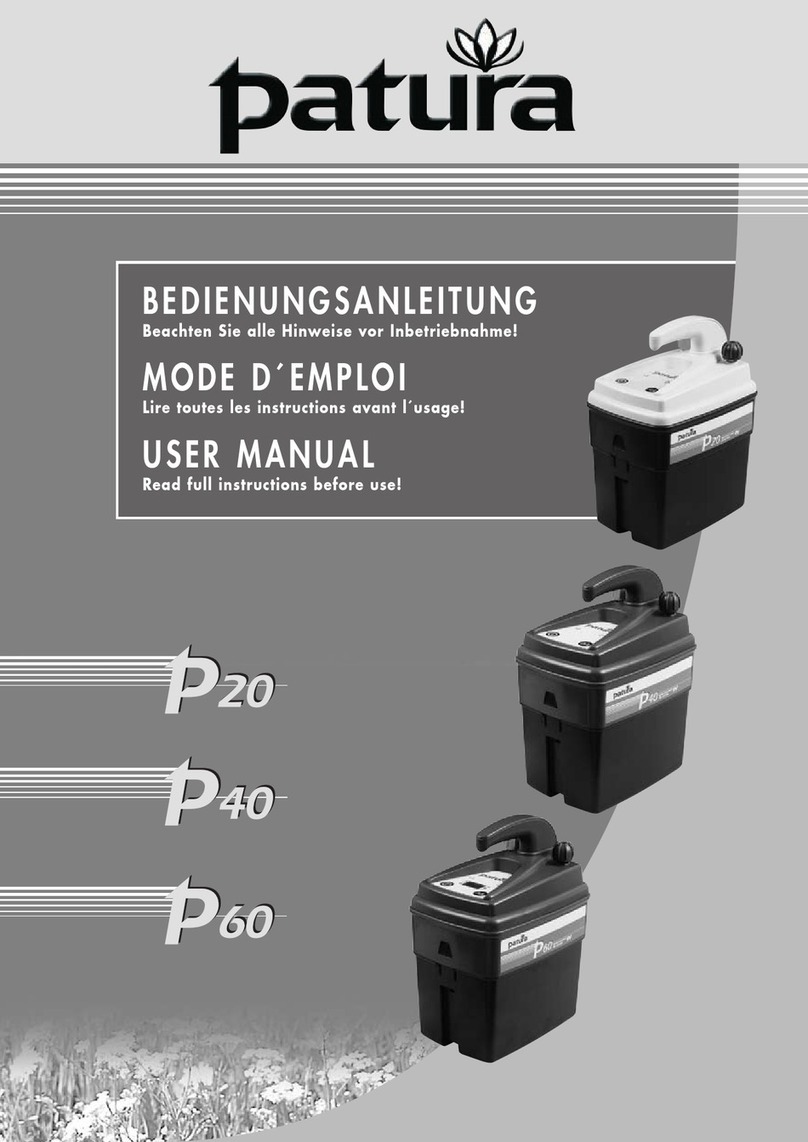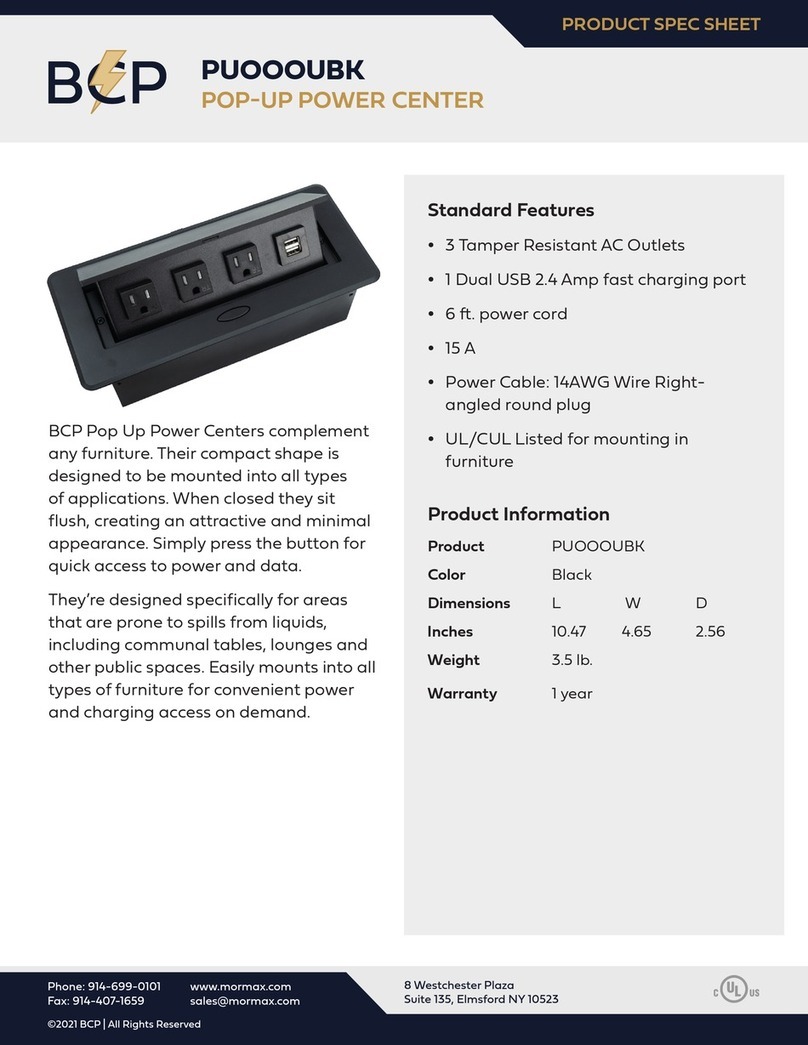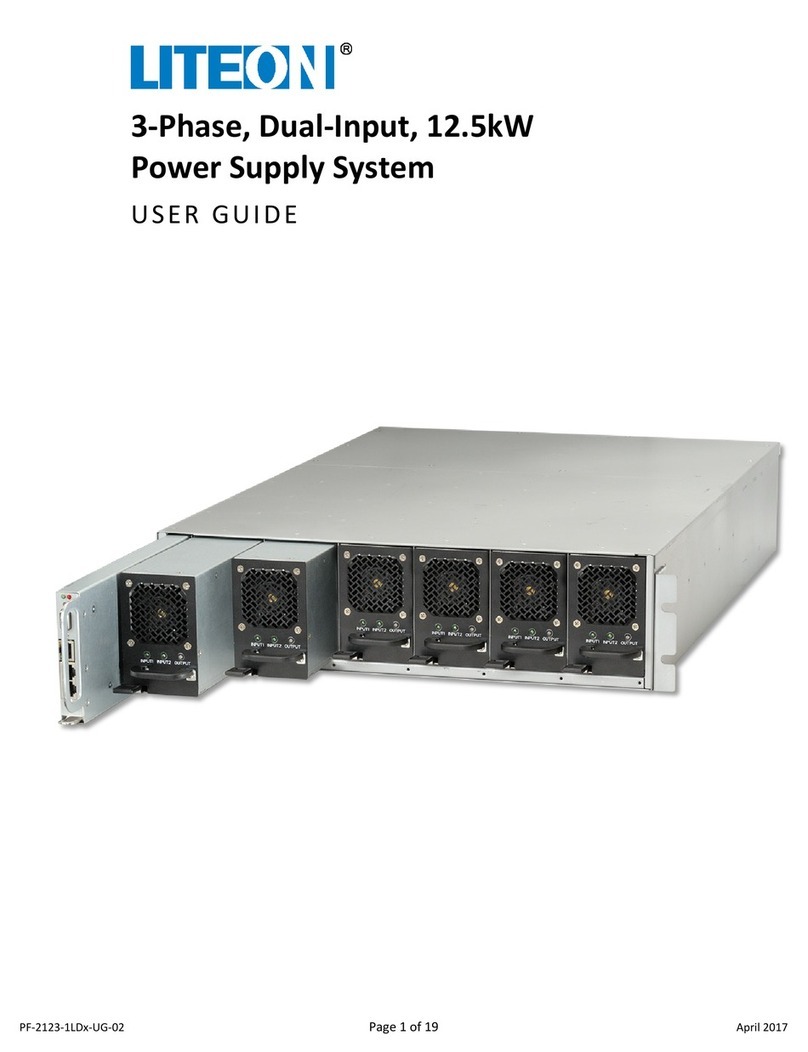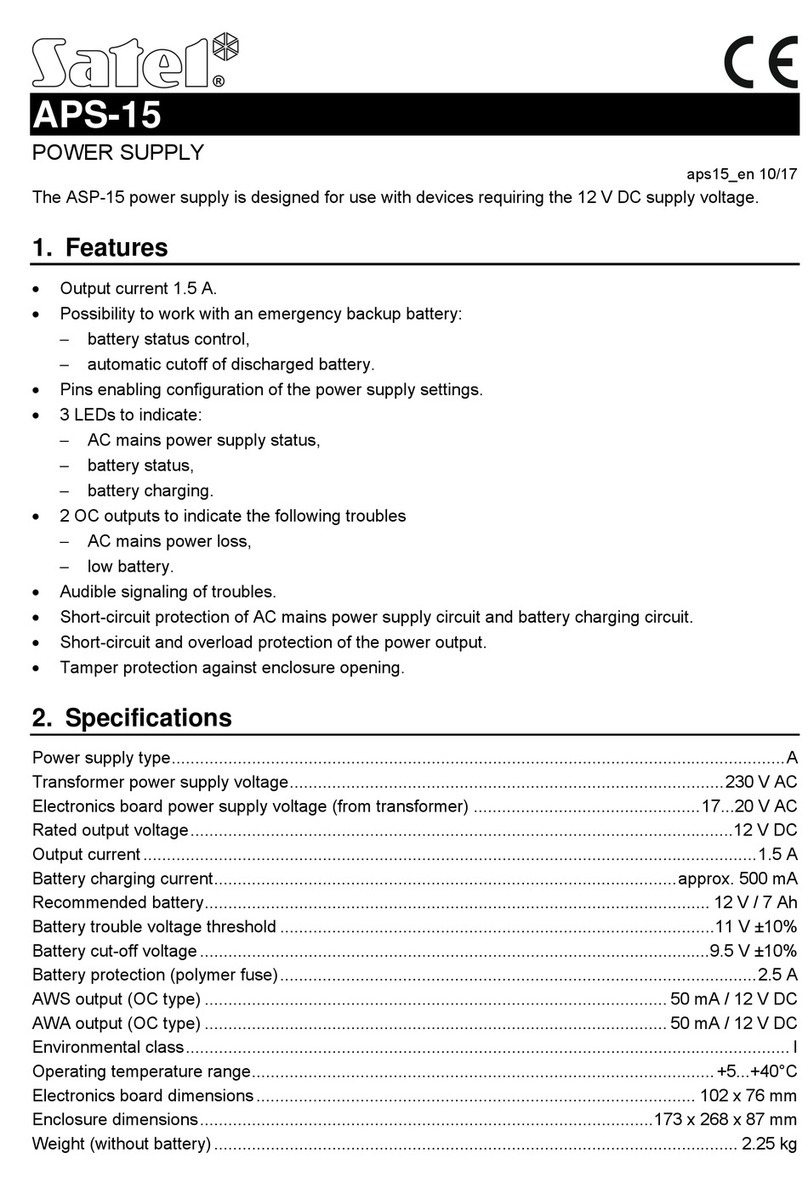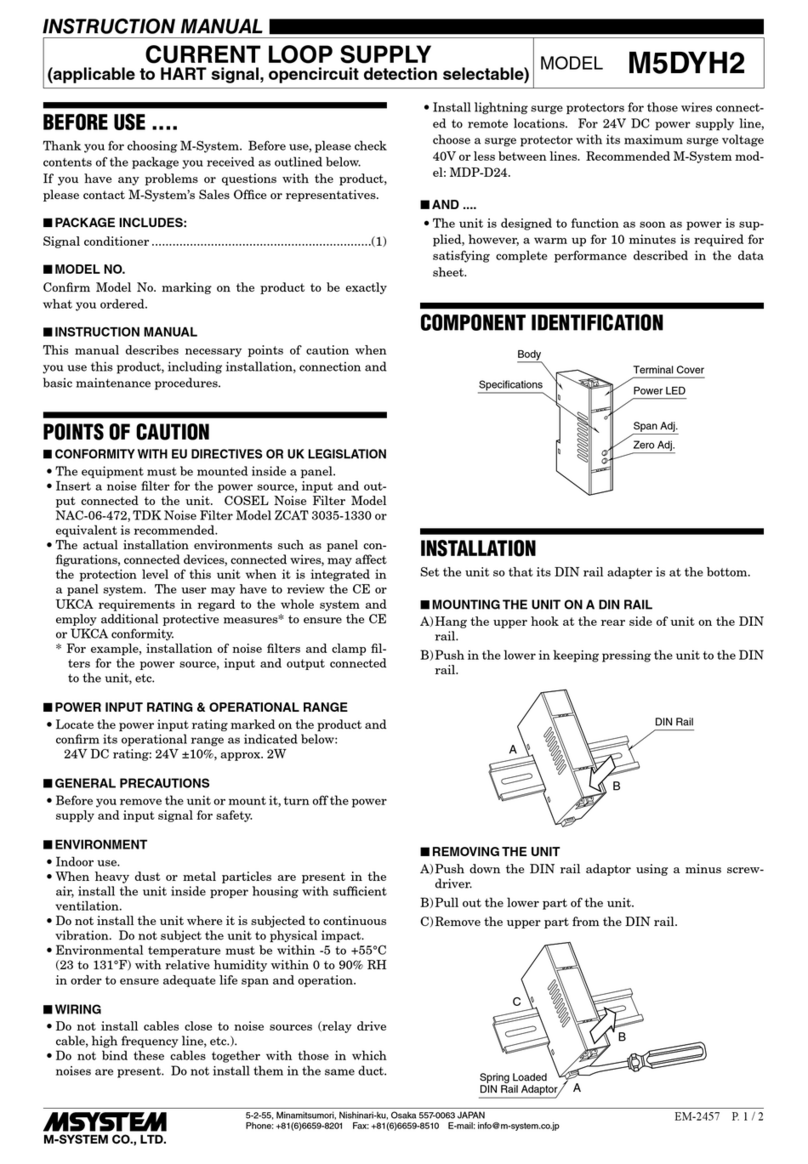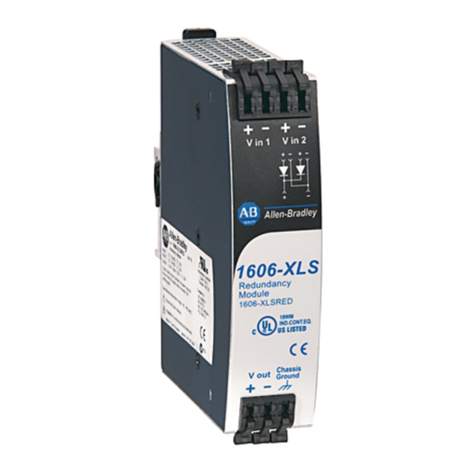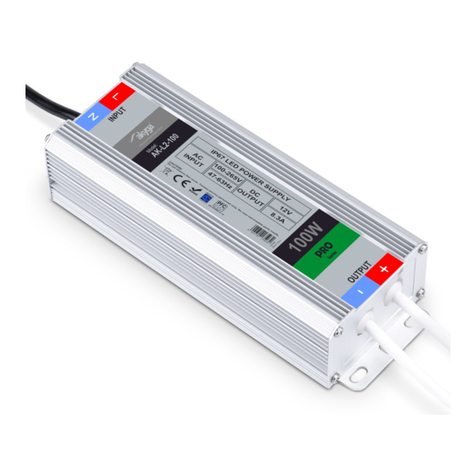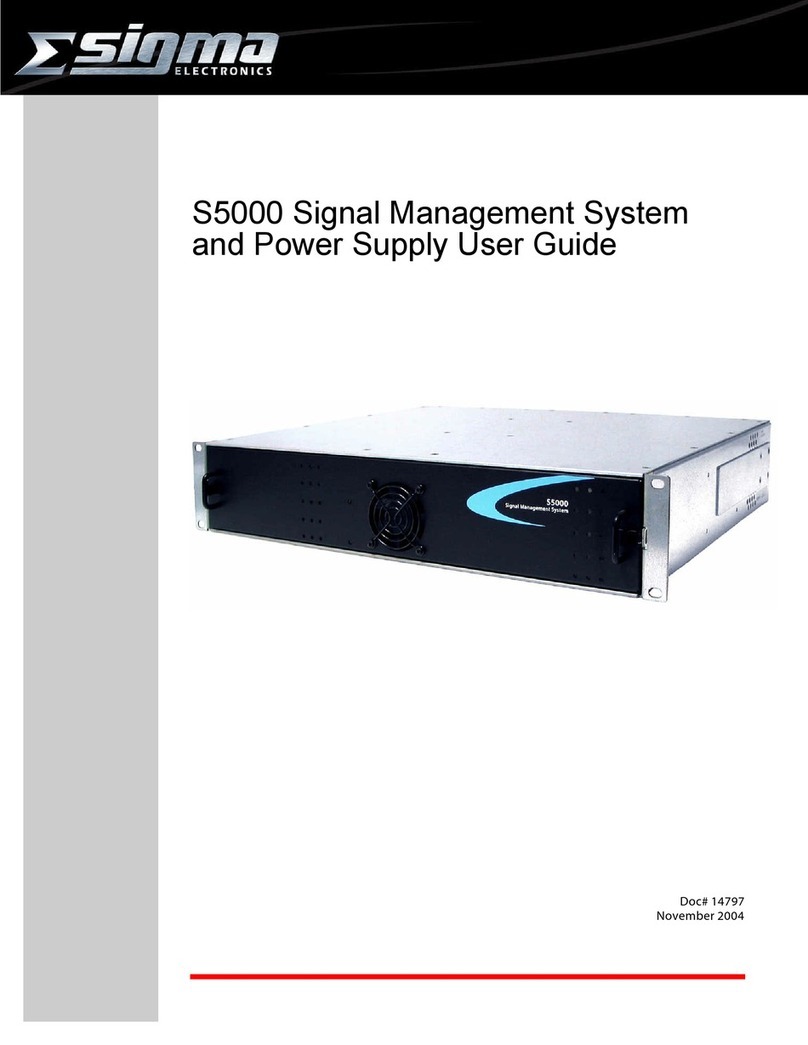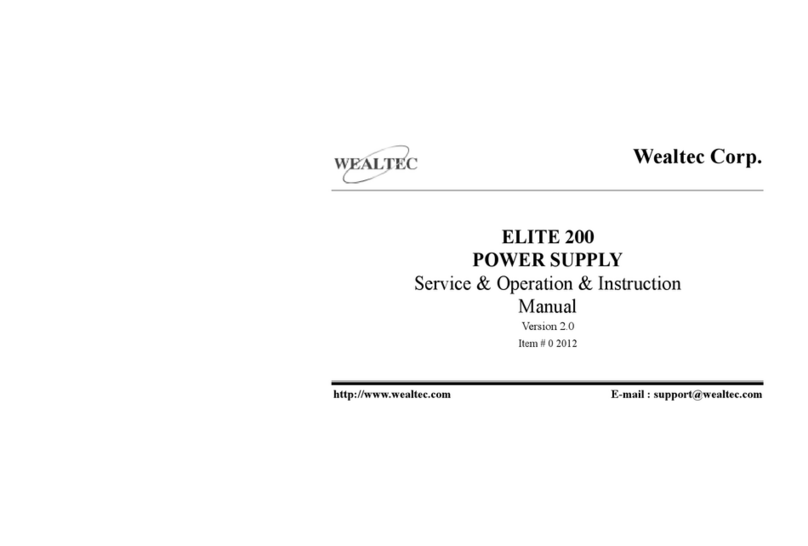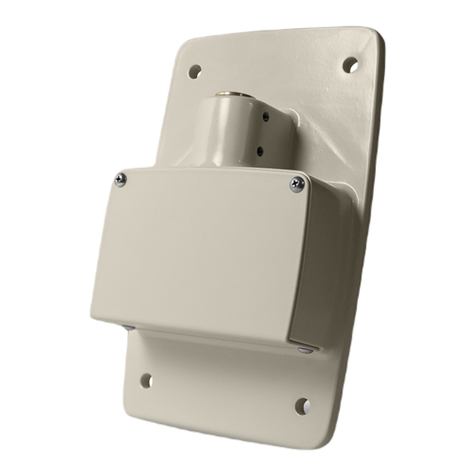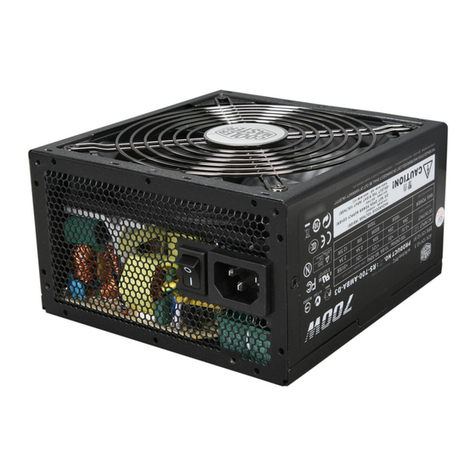
© EA Elektro-Automatik in 2022, this information is subject to change without notice 233200800_manual_elr_10000_4u_30kw_en_01
TABLE OF CONTENTS
1. General
1.1 About this document 5
1.1.1 Retention and use 5
1.1.2 Copyright 5
1.1.3 Validity 5
1.1.4 Symbols and warnings in this document 5
1.2 Warranty 5
1.3 Limitation of liability 5
1.4 Disposal of equipment 6
1.5 Product key 6
1.6 Intended usage 7
1.6.1 Symbols and warnings on the device 7
1.7 Safety 8
1.7.1 Safety notices 8
1.7.2 Responsibility of the operator 9
1.7.3 Requirements to the user 9
1.7.4 Responsibility of the user 9
1.7.5 Alarm signals 10
1.7.6 Functionality test 10
1.8 Technical Data 11
1.8.1 Approved operating conditions 11
1.8.2 General technical data 11
1.8.3 Specific technical data 12
1.8.4 Views 15
1.8.5 Control elements 20
1.9 Construction and function 21
1.9.1 General description 21
1.9.2 Block diagram 21
1.9.3 Scope of delivery 22
1.9.4 Accessories 22
1.9.5 Options 22
1.9.6 The control panel (HMI) 23
1.9.7 USB port (rear side) 26
1.9.8 Interface module slot 26
1.9.9 Analog interface 27
1.9.10 “Share BUS” connector 27
1.9.11 “Sense” connector (remote sensing) 27
1.9.12 Master-Slave bus 28
1.9.13 Ethernet port 28
1.9.14 Water cooling 28
2. Installation & commissioning
2.1 Transport and storage 29
2.1.1 Transport 29
2.1.2 Packaging 29
2.1.3 Storage 29
2.2 Unpacking and visual check 29
2.3 Installation 29
2.3.1 Safety procedures before installation and use29
2.3.2 Preparation 29
2.3.3 Installing the device 31
2.3.4 Connection to water supply (WC models) 32
2.3.5 Connection to AC supply 34
2.3.6 Connection to DC sources 36
2.3.7 Connection of remote sensing 38
2.3.8 Grounding of the DC terminal 39
2.3.9 Installation of an interface module 39
2.3.10 Connection of the analog interface 40
2.3.11 Connection of the Share bus 40
2.3.12 Connection of the USB port (rear side) 40
2.3.13 Initial commission 40
2.3.14 Commission after a firmware update or a long
period of non-use 40
3. Operation and application
3.1 Important notes 41
3.1.1 Personal safety 41
3.1.2 General 41
3.2 Operating modes 41
3.2.1 Voltage regulation / Constant voltage 41
3.2.2 Current regulation / constant current / current
limiting 42
3.2.3 Power regulation / constant power / power
limiting 42
3.2.4 Resistance regulation / constant resistance 42
3.2.5 Dynamic characteristics and stability criteria 42
3.3 Alarm conditions 43
3.3.1 Power Fail 43
3.3.2 Overtemperature 43
3.3.3 Overvoltage protection 43
3.3.4 Overcurrent protection 43
3.3.5 Overpower protection 43
3.3.6 Share bus fail 44
3.4 Manual operation 45
3.4.1 Switching on the device 45
3.4.2 Switching the device off 45
3.4.3 Configuration via the menu 45
3.4.4 Adjustment limits 54
3.4.5 Changing the operating mode 54
3.4.6 Manual adjustment of set values 55
3.4.7 Switching the DC input on or off 56
3.4.8 Recording to USB stick (logging) 56
3.4.9 The quick menu 57
3.4.10 The graph 58
3.5 Remote control 59




















